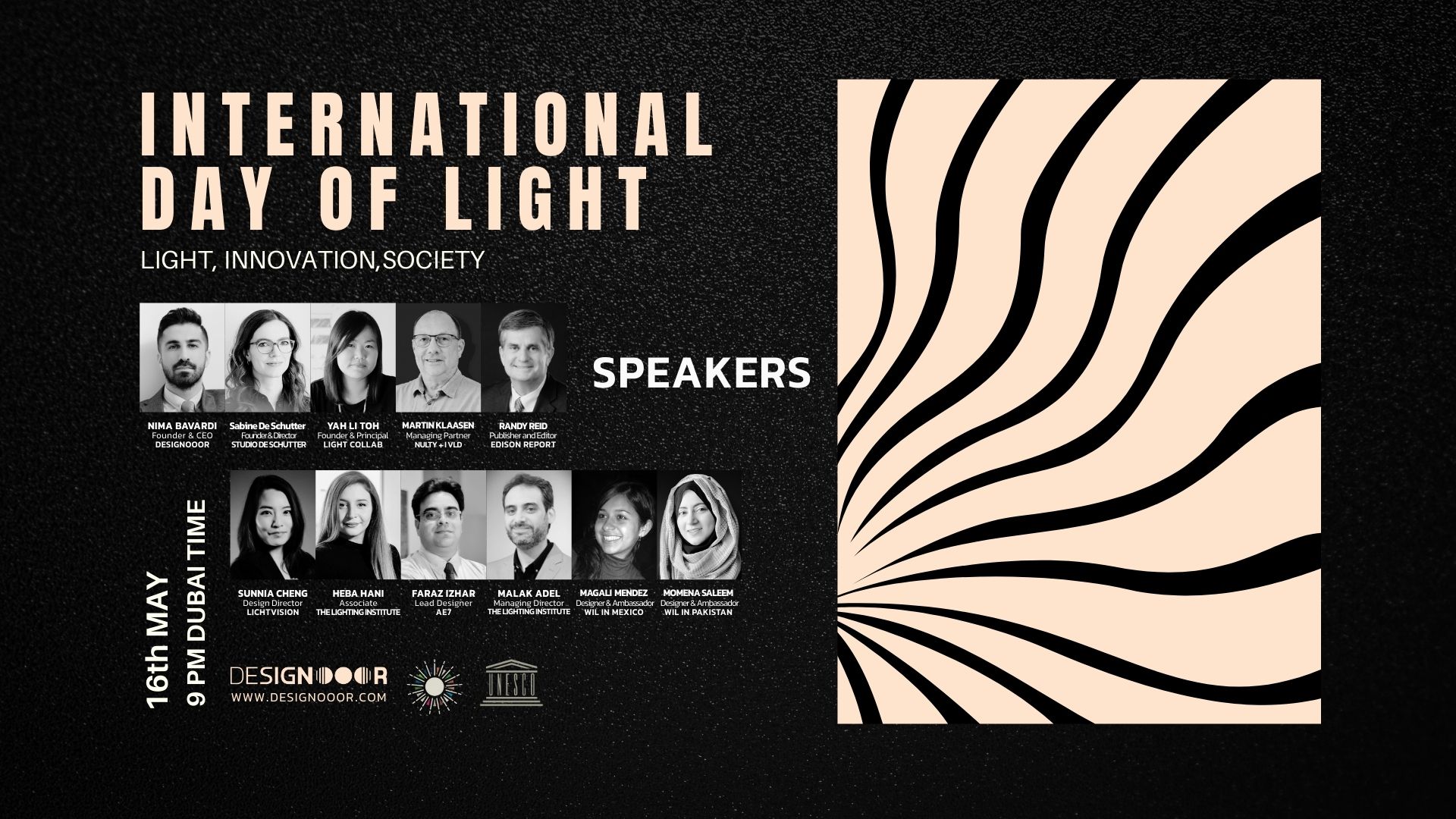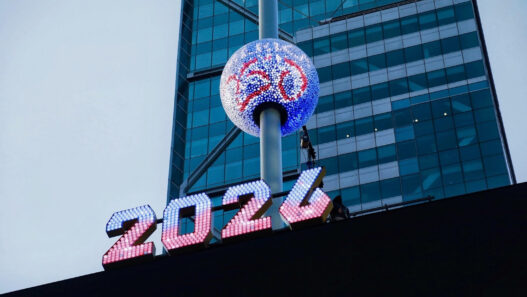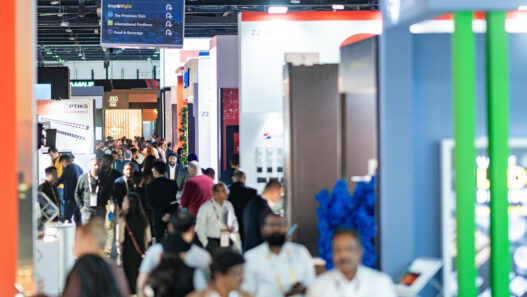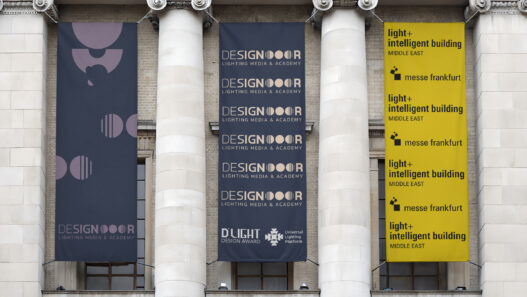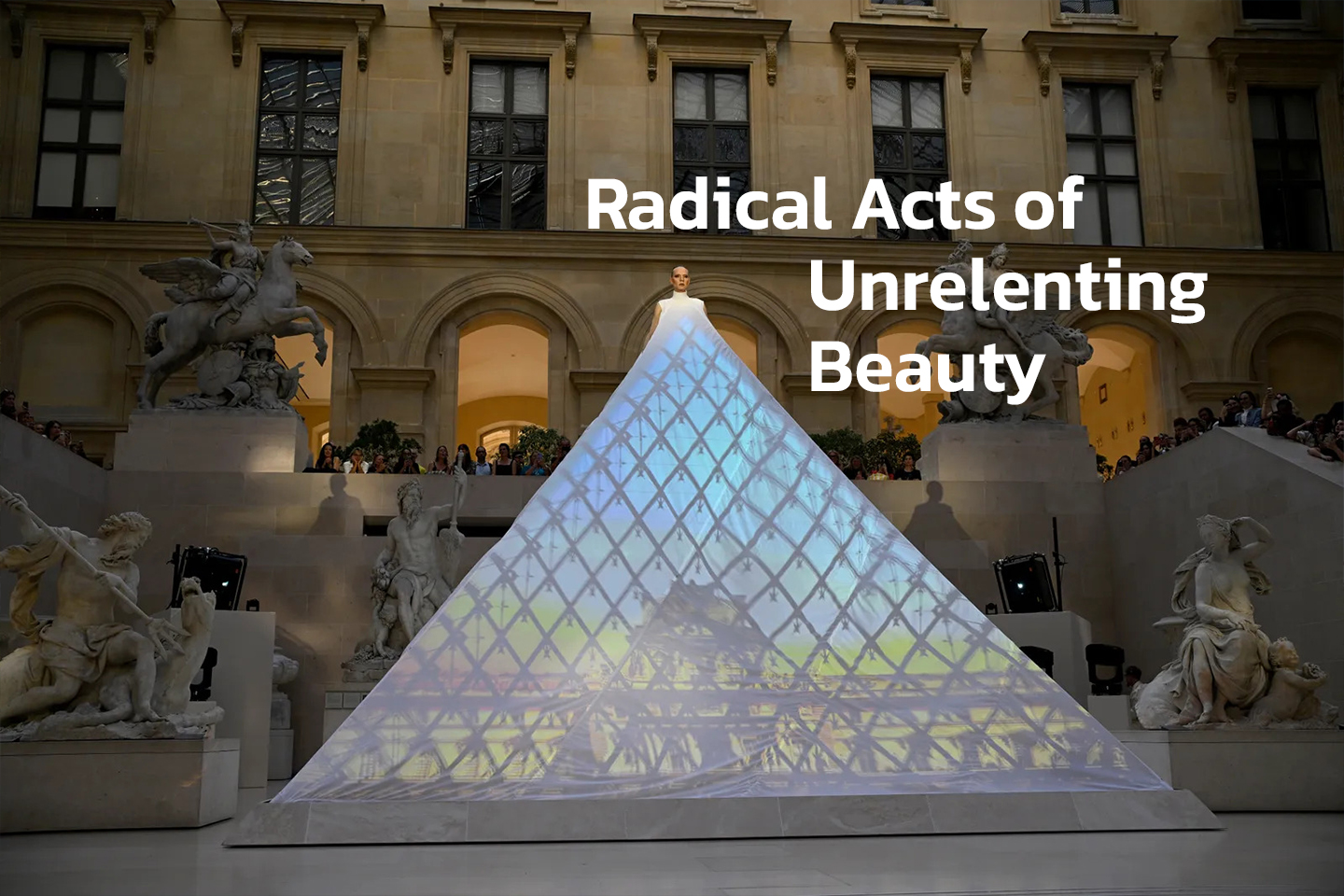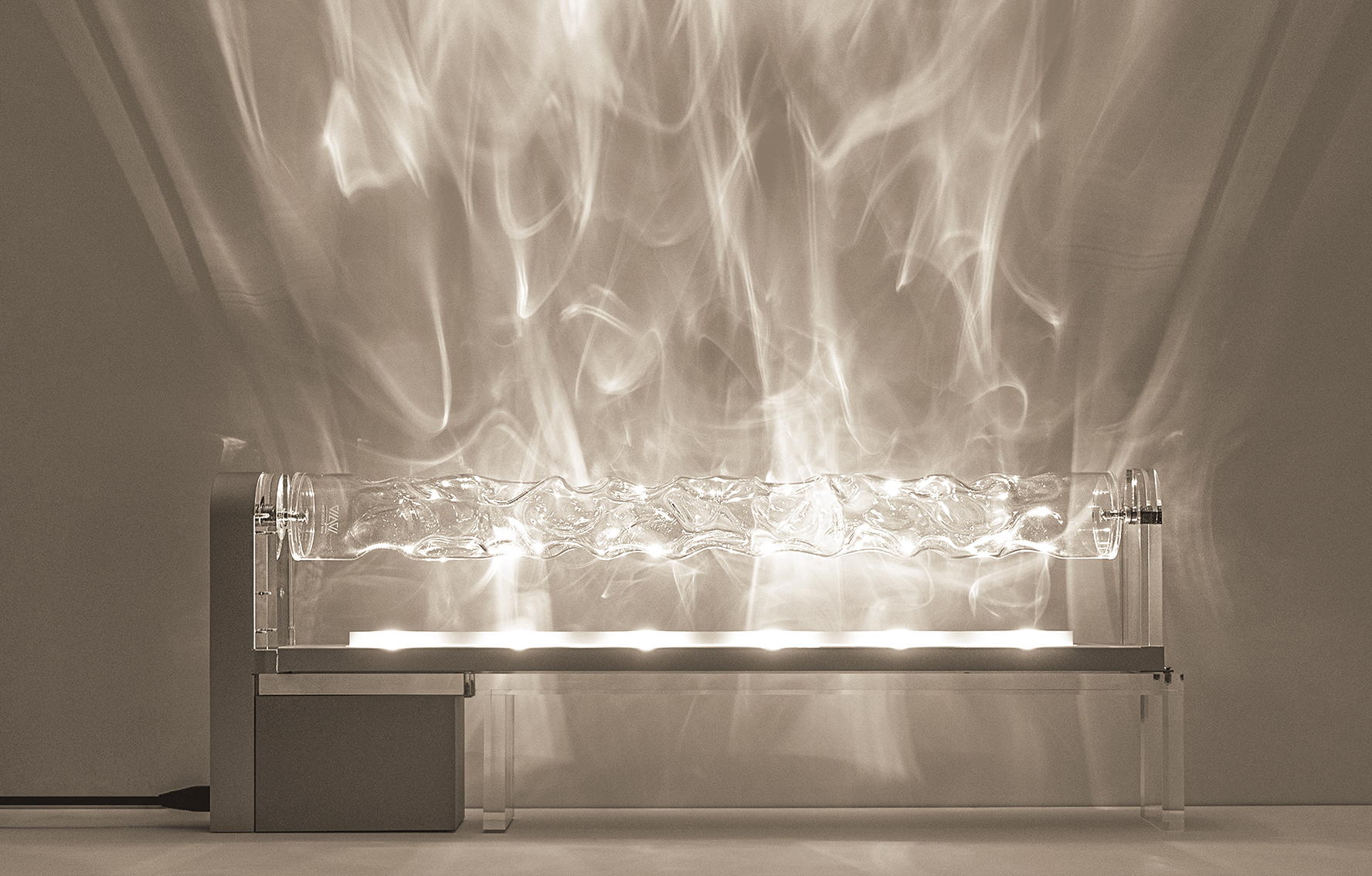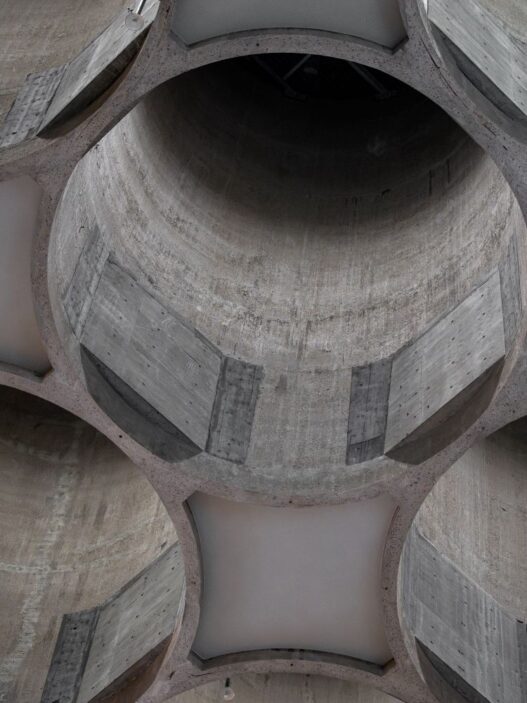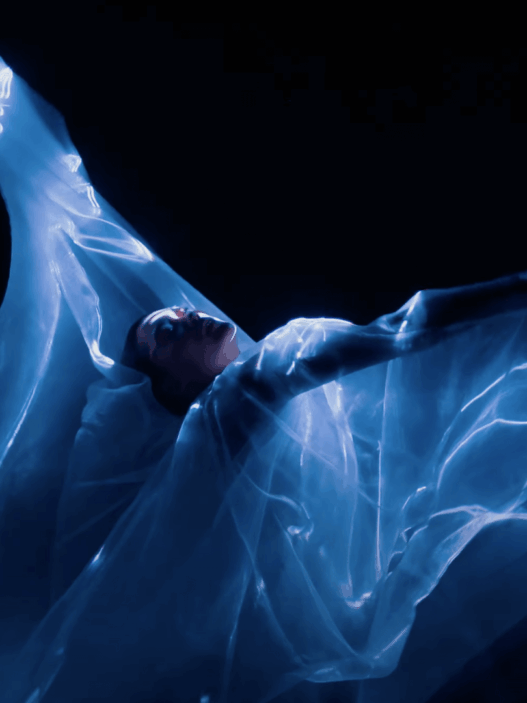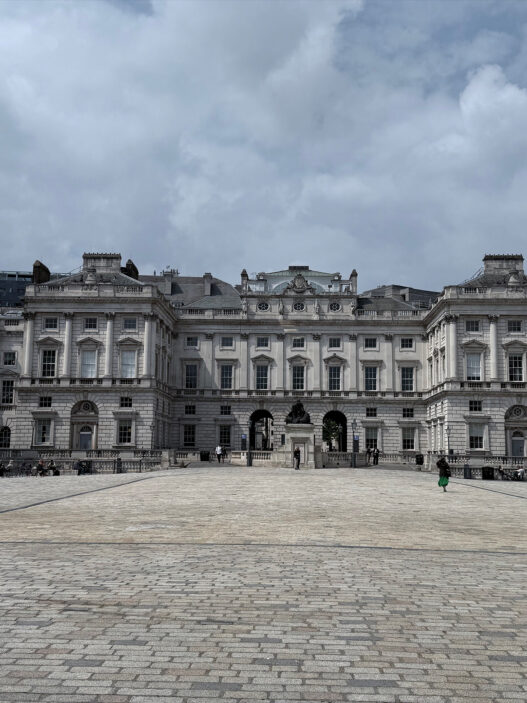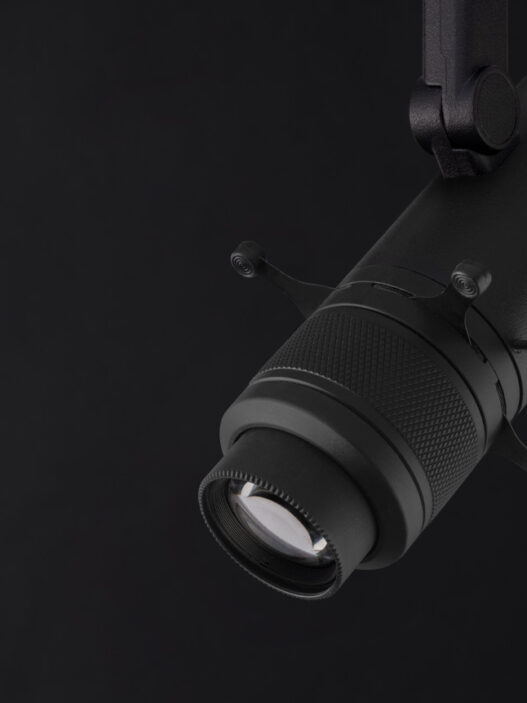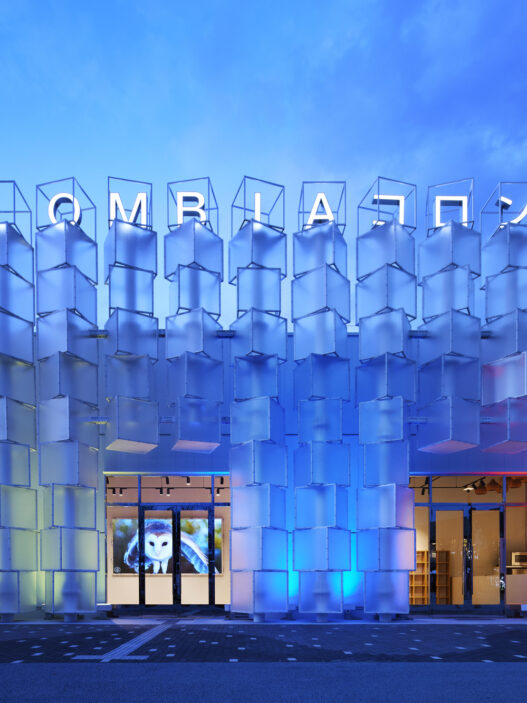The lighting in Jordan Roth’s “Radical Acts of Unrelenting Beauty” was not merely a means of illumination, it was the invisible dramaturg. From the first moment, in which performers entered as if they had slipped out of paintings themselves, the light subtly framed their presence, like museum-grade spotlights on artifacts that have temporarily come to life. The ambient warmth was intentionally restrained: this wasn’t about dazzling spectacle but about evoking intimacy within a space as vast and impersonal as the Louvre. The choice to hold back theatrics early on amplified the emotional punch of what was to come. It is in that calibrated restraint that the lighting design achieved its first triumph, building a silent architecture of anticipation.
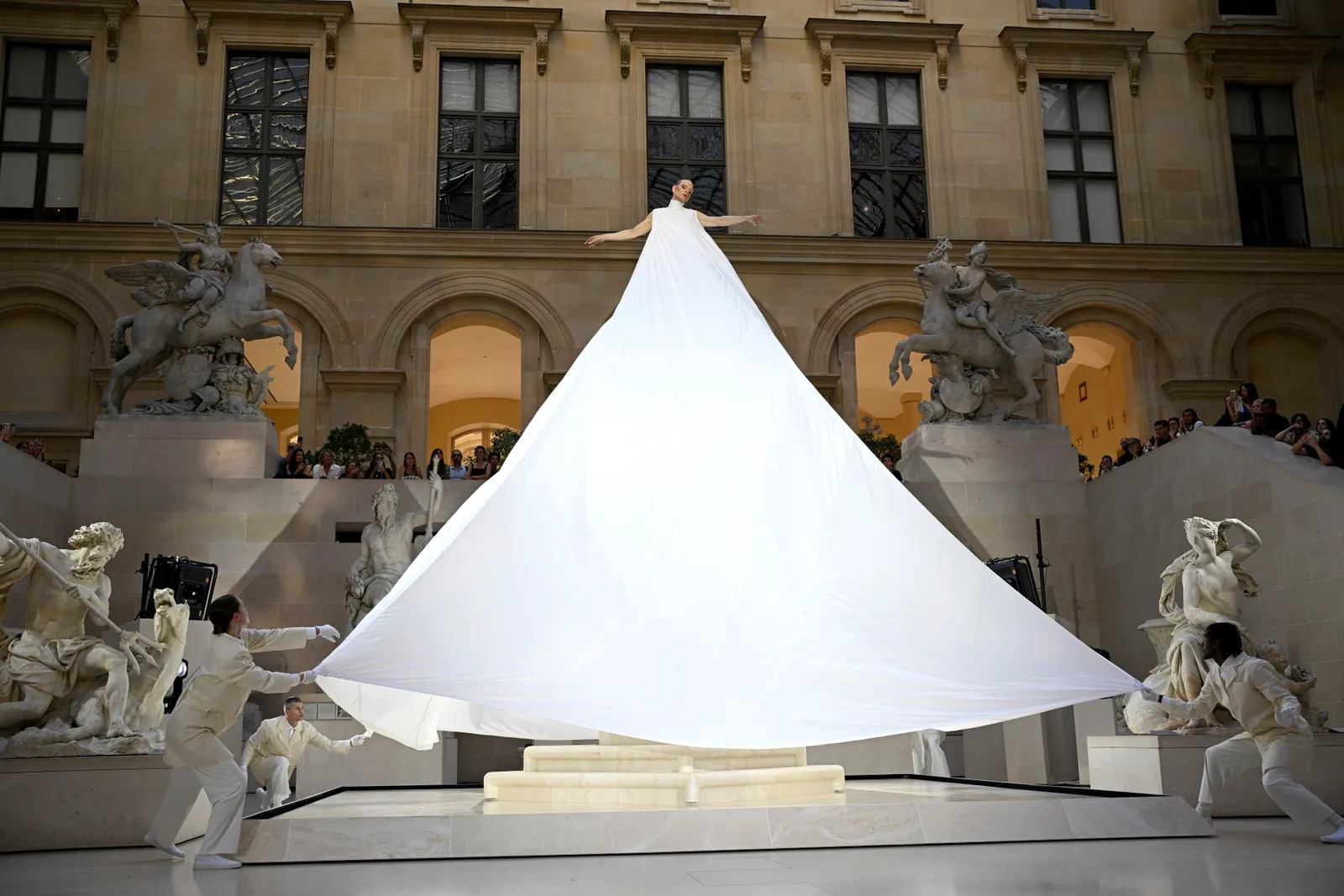
As Roth ascended, shedding softness for force, the lighting shifted in sync with his metamorphoses. In the second act, the introduction of dynamic projection onto the “wings” extended his body beyond physical limitations. Light here acted not just as texture, but as a prosthetic, transforming fabric into flight. It’s in these moments that the synergy between light and movement became most visible: projected color gradients weren’t just aesthetic choices, they echoed the narrative arc, moving from warmth to iridescent power, from softness to sharpness. There was something unmistakably avian in the composition, not just because of the eagle imagery, but in how the lighting mimicked the erratic shimmer of wings under different skies. This was light as metaphor, not decoration, it wasn’t there to flatter the performer or the garment, but to embed meaning in form.
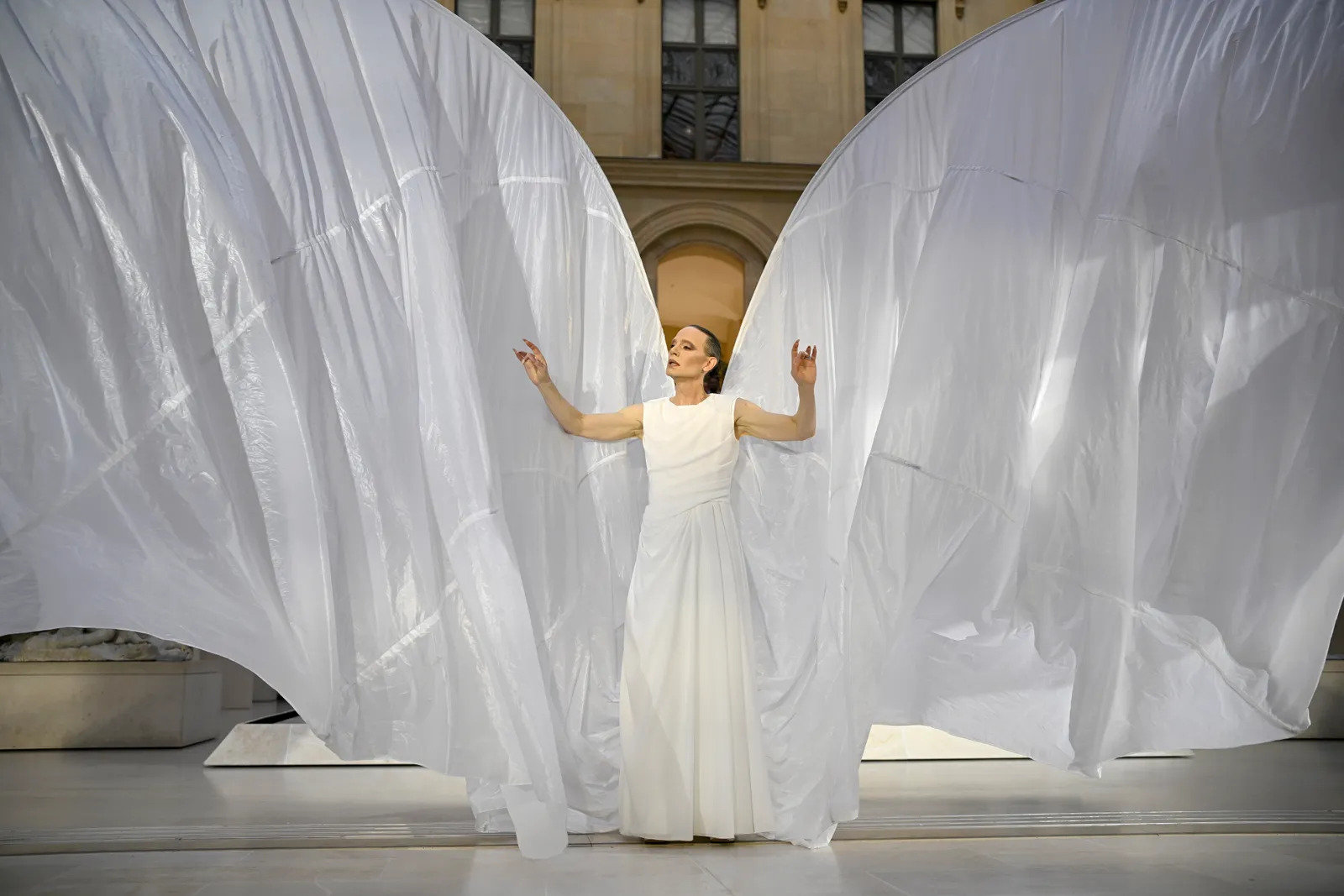
By the time Roth became the pyramid, a living monument within a monument, the lighting took a final conceptual leap. The dress, designed to mirror the Louvre’s iconic glass structure, only made sense through its interaction with light. It is easy to mistake this as visual trickery, but what occurred was a precise optical negotiation: the mapping of reflections and projections required exacting calibration. Without a carefully tuned lighting plan, one that considered not just the reflective fabric, but also the shifting ambient tones of the Marly courtyard, the illusion would have collapsed into gimmick. Instead, what emerged was a haunting blend of scale and ghostliness: Roth didn’t become like the Louvre pyramid, he was it, refracted and multiplied. This transformation was only possible because light turned the material into architecture. It was less about theatricality and more about temporal alchemy.
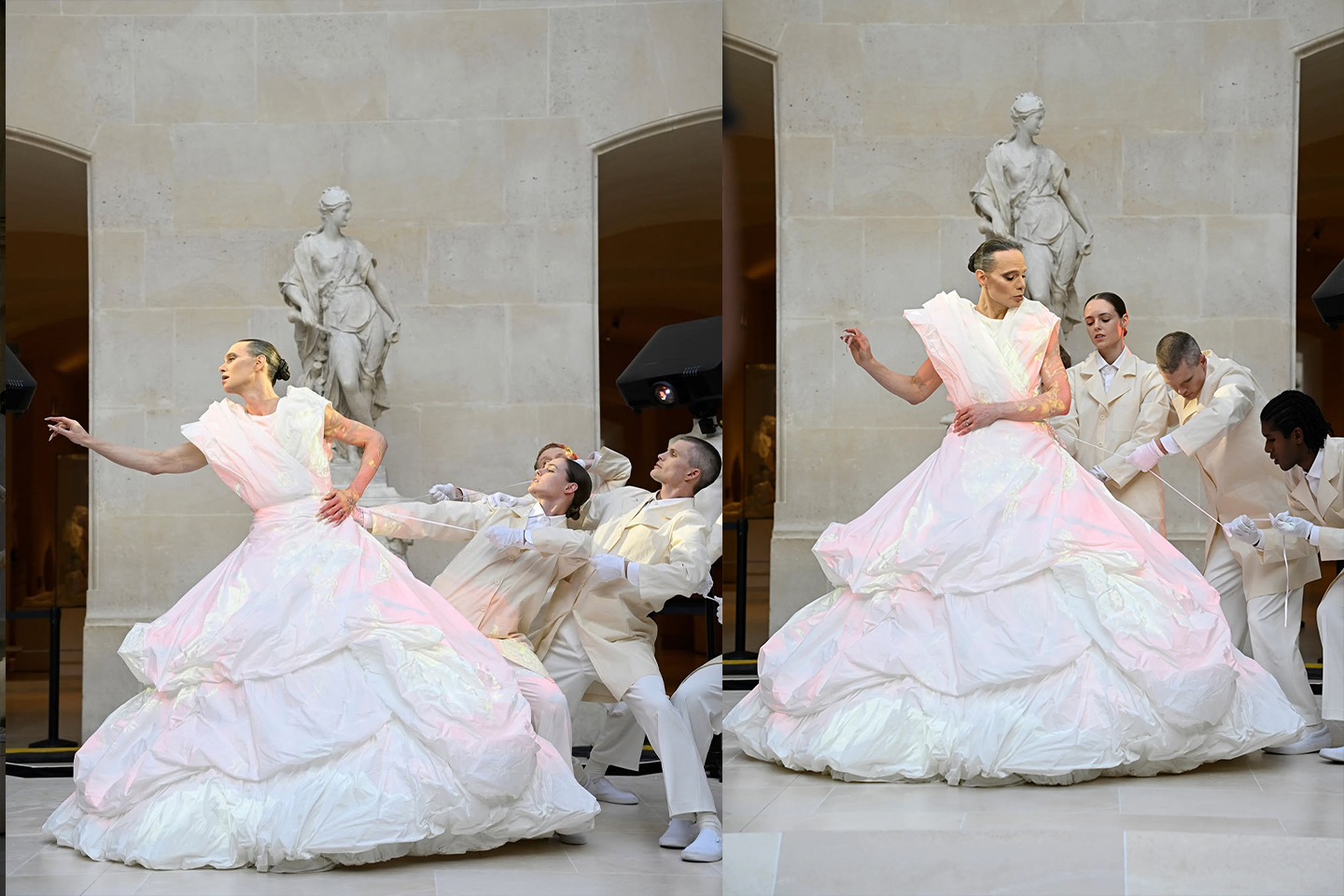
What’s most remarkable is that the lighting never demanded attention, yet held absolute authority. It resisted the urge to beautify and instead chose to clarify, define, and transform. The emotional gravity of the final tableau, Roth as a static, towering prism of glass and memory, rested entirely on the invisibility of its technical precision. The lighting design honored the complexity of the space without competing with it; it celebrated the fashion without romanticizing it; it embraced performance without overshadowing presence. This was not lighting as embellishment, it was lighting as language. And in a space saturated with visual legacy, to speak with light, clearly, quietly, irreversibly, is perhaps the most radical act of all.
Jordan Roth – “Radical Acts of Unrelenting Beauty”
Photo Credits : Kristy Sparow/Getty Images
